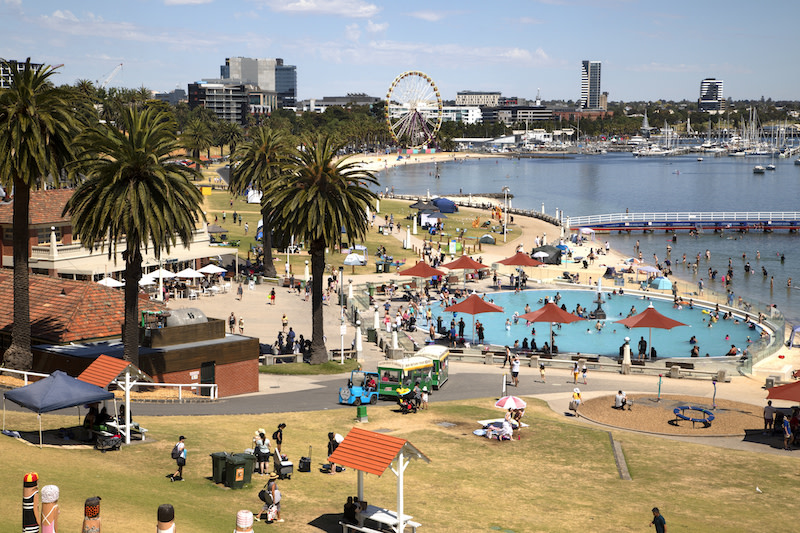Resources
Newsletter
Stay up to date and with the latest news, projects, deals and features.
Subscribe
Millennials in search of cheaper housing, job opportunities and, in some cases, warmer weather are leading the exit from capital cities to regional Australia, according to a report by Australia’s biggest bank.
The number of people moving to regional areas jumped 16.6 per cent to a five-year high in the March quarter, with net migration almost doubling pre-pandemic levels, according to the Regional Movers Index.
The majority of those moving to major regional hotspots during the 12 months to March were millennials—that part of the population aged 24 to 40.
The biggest exits were from Sydney and Melbourne with most people heading to regional NSW, Queensland, and Victoria, according to the March quarter of the index.
And in that same quarter, the number of people moving from capitals to regions was 9 per cent higher than the post-pandemic average and 26.7 per cent higher than the average during the two years prior to the pandemic.
The Regional Movers Index, launched in 2021, is a partnership between the Commonwealth Bank and the Regional Australia Institute. It tracks movements between Australia’s regions and capital cities, using the bank’s data from relocations among its 10 million customers.
For the first time, this quarter’s report not only tracked population movement but the demographics of who is moving.
Queensland’s Gold Coast remains the most popular destination overall, attracting 11 per cent of people from major capitals in the past year. The next most popular destinations were the Sunshine Coast, Greater Geelong in Victoria, and Wollongong and Newcastle in NSW.
Jobs and housing are the key reasons for the movement.
Regional Australia Institute chief executive Liz Ritchie said Millennials and Gen-Xers were welcome additions to any regional community as they often brought with them business skills as well as families who integrated into the local school system and community sport.
“Regional living is attracting more young people and particularly younger families who are looking for bigger living spaces at a cheaper cost,” Ritchie said.
Who’s moving to the top five destinations

The results are perhaps not surprising given that for the first time the Australian Bureau of Statistics says millennials and baby boomers each account for 21.5 per cent of Australia’s 25.5 million residents.
There are about 5.4 million in each generation, according to the 2021 national census, of which preliminary findings were released this week.
Elsewhere, the Regional Movers Index showed three of the top five local government areas for growth in capital-to-regional migration were in South Australia, where median house prices were well below other states.
The number of people moving from the city to Ceduna, 780km north-west of Adelaide on the shores of Murat Bay, more than doubled from the previous 12 months. And 66 per cent of those were millennials, with the average age just 31 years.
The number of people moving to Mt Gambier—South Australia’s second-biggest city, just 17km from the Victorian border—increased by 85 per cent in the year. Seventy per cent of them were Millennials with the average age of 29 years.
“Mount Gambier is perfectly positioned between Adelaide and Melbourne with wonderful amenities and work opportunities in a diverse range of industries including manufacturing, agriculture, civil construction and wholesale retail,” said Commonwealth Bank regional executive general manager Paul Fowler.
“Regional Australia is thriving, fuelled by strong investment across a broad range of industries including agriculture, manufacturing, retail and hospitality,” Fowler said.
Other major destinations were Port Augusta in South Australia, Western Downs in Queensland’s south-east and Moorabool, north-west of Melbourne.

Meanwhile, as property prices showed declines in many of Melbourne’s suburbs, property services group Oliver Hume said land market values in greenfield and regional markets remained steady in the June quarter.
Oliver Hume research indicated new residential land prices in Melbourne’s growth areas reached an all-time high of $380,000 in the quarter, up from $367,500 in the March quarter. The median price of conventional lots rose from $366,000 to 377,000 over the same period.
The research showed most municipalities across the combined greater Melbourne and Geelong market recorded an increase. The Mitchell Shire and the Melton and Wyndham municipalities recorded the biggest increases.
Oliver Hume head of national research George Bougias said while Victoria’s land market would continue to transition in light of changing conditions, the most recent data suggested the current adjustment was occurring mostly through volumes with prices remaining relatively resilient.
“Greenfield residential markets typically follow trends in the broader established market and, while we are closely monitoring the real-time information we are collecting, it appears that various factors are providing support to the overall market,” Bougias said.
“This is despite higher interest rates, rising inflation and cost-of-living pressures which are beginning to emerge.
"Importantly, residential greenfield markets remain relatively affordable and have benefited from the increase in the number of people working from home.”